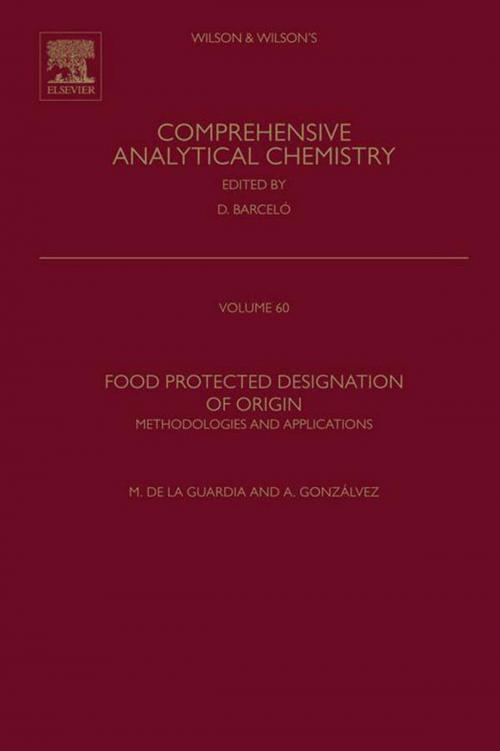Food Protected Designation of Origin
Methodologies and Applications
Nonfiction, Science & Nature, Science, Chemistry, Analytic, Technology, Food Industry & Science| Author: | Miguel de la Guardia, Ana Gonzalvez Illueca | ISBN: | 9780444595720 |
| Publisher: | Elsevier Science | Publication: | June 11, 2013 |
| Imprint: | Elsevier | Language: | English |
| Author: | Miguel de la Guardia, Ana Gonzalvez Illueca |
| ISBN: | 9780444595720 |
| Publisher: | Elsevier Science |
| Publication: | June 11, 2013 |
| Imprint: | Elsevier |
| Language: | English |
Protected designation of origin (PDO) taken together with other geographical indicators, such as protected geographical indication (PGI) and traditional specialty guaranteed (TSG), offer the consumer additional guarantees on the quality and authentication of foods. They are important tools that protect the names of regional foods, such as wines, cheeses, hams, sausages and olives, so that only foods that genuinely originate in a particular region are allowed to be identified as such.
The economic value of these regional foods, as well as the increased interest from consumers and the food industry about the traceability and origin of food, mean that it has become necessary to establish methods for PDO and PGI authentication based on the specific characteristics and chemical markers of these kinds of products.
This book offers a complete guide of the methods available to authenticate food PDO, beginning with an explanation of the analytical and chemometric methods available for PDO authentication, before looking at the main foods covered, PGI labels and the social and legal framework for food PGIs. It will be of interest to people engaged in the fields of food production, commercialization and consumption, as well as policymakers and control laboratories.
- Offers a complete guide to the methods available for food Protected Designation of Origin (PDO) authentication
- Explains the analytical and chemometric methods
- Focuses on the various food products covered by authentication labels
Protected designation of origin (PDO) taken together with other geographical indicators, such as protected geographical indication (PGI) and traditional specialty guaranteed (TSG), offer the consumer additional guarantees on the quality and authentication of foods. They are important tools that protect the names of regional foods, such as wines, cheeses, hams, sausages and olives, so that only foods that genuinely originate in a particular region are allowed to be identified as such.
The economic value of these regional foods, as well as the increased interest from consumers and the food industry about the traceability and origin of food, mean that it has become necessary to establish methods for PDO and PGI authentication based on the specific characteristics and chemical markers of these kinds of products.
This book offers a complete guide of the methods available to authenticate food PDO, beginning with an explanation of the analytical and chemometric methods available for PDO authentication, before looking at the main foods covered, PGI labels and the social and legal framework for food PGIs. It will be of interest to people engaged in the fields of food production, commercialization and consumption, as well as policymakers and control laboratories.
- Offers a complete guide to the methods available for food Protected Designation of Origin (PDO) authentication
- Explains the analytical and chemometric methods
- Focuses on the various food products covered by authentication labels















